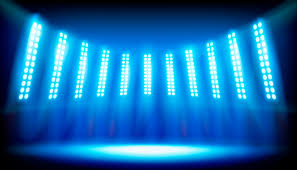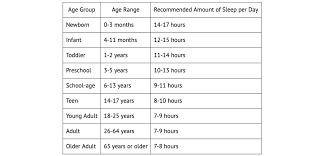The Impact of Blue Light on Health and Sleep
Blue light is a type of light that is emitted by electronic devices such as smartphones, tablets, computers, and LED lights. While blue light is beneficial during the day as it boosts attention, reaction times, and mood, exposure to blue light at night can have negative effects on health and sleep.
One of the main concerns with blue light exposure is its impact on the circadian rhythm. Blue light suppresses the production of melatonin, a hormone that regulates sleep-wake cycles. This disruption can lead to difficulty falling asleep, poor sleep quality, and daytime fatigue.
Research has shown that prolonged exposure to blue light at night can also contribute to eye strain, headaches, and digital eye fatigue. The high-energy visible (HEV) light emitted by screens can cause digital eye strain symptoms such as dry eyes, blurred vision, and difficulty focusing.
To mitigate the negative effects of blue light exposure, there are several strategies you can implement:
- Use blue light filters or night mode settings on electronic devices to reduce blue light emission in the evening.
- Avoid screen time at least an hour before bedtime to allow your body to naturally produce melatonin and prepare for sleep.
- Invest in blue light blocking glasses that filter out harmful blue light wavelengths.
- Create a bedtime routine that includes relaxation techniques such as reading a book or taking a warm bath instead of using screens.
By being mindful of your exposure to blue light and implementing these strategies, you can protect your health, improve your sleep quality, and reduce the negative impact of screen time on your well-being.
Understanding Blue Light: Answers to Your Most Common Questions
- What is blue light?
- Where does blue light come from?
- How does blue light affect sleep?
- Is blue light harmful to the eyes?
- What are the sources of blue light exposure?
- Can blue light cause eye strain and headaches?
- How can I protect myself from the negative effects of blue light?
What is blue light?
Blue light is a type of light that is emitted by electronic devices such as smartphones, tablets, computers, and LED lights. It falls within the high-energy visible (HEV) light spectrum and has a shorter wavelength compared to other colors of light. Blue light plays a crucial role in regulating our circadian rhythm and boosting attention and mood during the day. However, excessive exposure to blue light, especially at night, can disrupt our sleep-wake cycle by suppressing melatonin production. This disruption can lead to difficulty falling asleep, poor sleep quality, and other health issues. It’s important to be aware of the impact of blue light on our health and implement strategies to minimize its negative effects for overall well-being.
Where does blue light come from?
Blue light is a type of light that is commonly emitted by electronic devices such as smartphones, tablets, computers, and LED lights. It is also present in natural sunlight, with the blue wavelengths being the highest energy and shortest in the visible light spectrum. While exposure to natural blue light during the day can have positive effects on mood and alertness, excessive exposure to artificial blue light sources, especially in the evening and at night, can disrupt our circadian rhythm and negatively impact our sleep quality. It’s important to be mindful of where blue light comes from and how we can manage our exposure to protect our health and well-being.
How does blue light affect sleep?
Blue light affects sleep by suppressing the production of melatonin, a hormone that regulates our sleep-wake cycle. Exposure to blue light, especially in the evening from electronic devices like smartphones and computers, can disrupt our circadian rhythm and make it harder to fall asleep. The suppression of melatonin delays the onset of sleep and can lead to poor sleep quality, resulting in daytime fatigue and reduced cognitive function. It is important to limit blue light exposure before bedtime to support the body’s natural sleep processes and improve overall sleep health.
Is blue light harmful to the eyes?
Blue light has been a topic of concern regarding its potential harm to the eyes. While exposure to blue light from electronic devices and LED lights can cause eye strain and discomfort, there is ongoing debate about its long-term effects on eye health. Some studies suggest that prolonged exposure to blue light may contribute to digital eye strain and disrupt sleep patterns by suppressing melatonin production. To mitigate potential risks, experts recommend using blue light filters on screens, taking regular breaks from screen time, and maintaining good overall eye health practices. It is essential to be mindful of blue light exposure and take proactive steps to protect your eyes while using digital devices.
What are the sources of blue light exposure?
Blue light exposure can come from various sources in our daily lives. The most common sources of blue light include electronic devices such as smartphones, tablets, computers, and televisions. LED lights and fluorescent lighting also emit blue light. Natural sources of blue light include the sun, which is the primary source of blue light during the day. However, artificial sources of blue light have become more prevalent with the increasing use of digital screens and energy-efficient lighting. It’s important to be aware of these sources and take steps to minimize excessive exposure to blue light, especially in the evening to support better sleep and overall health.
Can blue light cause eye strain and headaches?
Yes, blue light can cause eye strain and headaches. Prolonged exposure to blue light emitted by electronic devices such as smartphones, computers, and tablets can lead to digital eye strain symptoms. The high-energy visible (HEV) light from screens can contribute to dry eyes, blurred vision, and difficulty focusing, ultimately resulting in eye discomfort and fatigue. Additionally, the impact of blue light on the circadian rhythm can disrupt sleep patterns, leading to headaches and overall fatigue. It is important to be mindful of your screen time and consider using blue light filters or glasses to reduce the negative effects of blue light on your eyes and overall well-being.
How can I protect myself from the negative effects of blue light?
To protect yourself from the negative effects of blue light, there are several effective strategies you can adopt. One approach is to use blue light filters or activate night mode settings on your electronic devices, especially in the evening hours. This helps reduce the amount of blue light emitted and minimizes its impact on your circadian rhythm. Additionally, consider taking regular breaks from screen time and incorporating activities that do not involve screens into your daily routine. Investing in blue light blocking glasses can also be beneficial, as they help filter out harmful blue light wavelengths and reduce eye strain. By being proactive and mindful of your exposure to blue light, you can safeguard your health and improve your overall well-being.




